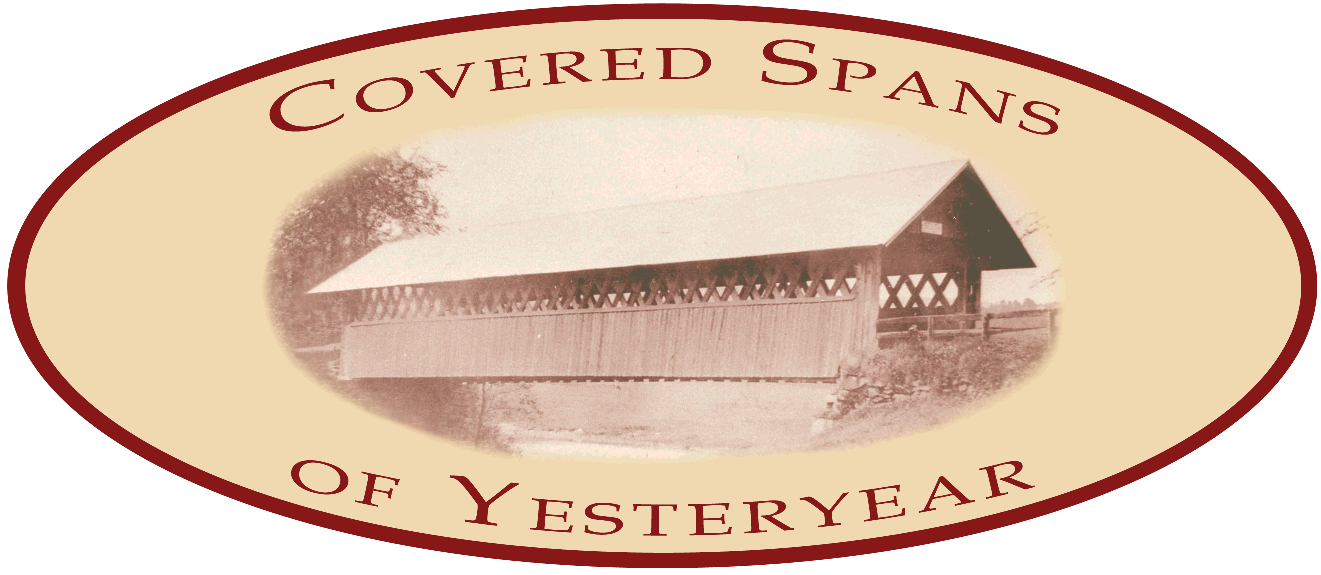
 |
Documenting North America's past & present covered bridges |
Covered Spans of Yesteryear FAQ
Bridge Numbering
Covered Bridges:
The numbering convention used for this project is a modified format of the one used by the National Society for the Preservation of Covered Bridges (NSPCB). There are 4 parts to the bridge number:
| State/Province | Two letter code identifying the state, province, or territory where the bridge is located followed by a "/" and then the state province number. The two letter postal codes are being used. Some people are familiar with the location numbers, while others prefer the postal code. We will be including both numbers. |
| County | A number identifying the county where the bridge is located. The county numbers are typically assigned in alphabetical order. These are the same numbers used by the World Guide. |
| Number | A bridge number within the county. There is no specific order in which these numbers are assigned. World Guide numbers are used when they exist. In some instances, numbers have been assigned to lost bridges by other researchers. These are used if they don't conflict with World Guide numbers. Numbers over 201 are "temporary" numbers assigned by CSOY staff until we are confident that the bridge has not been included on any existing numbered list. At that point it will be assigned a new number in sequence with other bridges in the county. |
| Number Suffix | In cases where two or more structures have existed at a single site, the bridge number will be appended by "#2", "#3", "#4", etc. to identify each structure at that site. If a bridge has moved to a different county, it is assigned a new number. If it is moved within the county, there are two entries with the same number; one describing each location. |
| Existing or Gone | If the bridge no longer exists, an "x" is added to the end of the number. |
| Renumbered | If a bridge number assigned by the National Society has been changed, a reference to the previous number is listed with an "r" added to the end of the number. Most of these situations occurred when a separate numbering system was developed for modern shelters. Bridges that were listed in the 1972 World Guide that no longer fit the definition of "authentic" wood truss structures, were renumbered. |
For example, bridge number NH/29-07-53x was the 53rd bridge assigned a number within Merrimack County (07) New Hampshire (NH/29). It no longer exists (x).
Boxed Pony Truss Bridges:
A boxed pony truss bridge is one with trusses that are shorter than those on a fully covered bridge. The trusses of these structures are covered, but there is no roof. The National Society for the Preservation of Covered Bridges (NSPCB) identifies these structures using the same rules as fully covered bridges, except that the letter "P" is used in the final part of the number. This pattern is being followed for the Covered Spans of Yesteryear project. For example - ME/19-16-P2x, is the former Arundel bridge that carried Sinnot Road over the Boston & Maine Railroad near Arundel , Maine.
Uncertain Bridges:
As we research older bridges, there are numerous cases where we are not sure if a bridge was covered or not. There are also instances where a covered bridge is rumored to exist, yet no conclusive proof has been found. In these cases, the bridge information is added to the database and the final part of the structure number begins with the letter "Q". An example is the 1827 Ferry Point Bridge between Calais, Maine and St. Stephen, New Brunswick - ME/19-15-Q1x / NB/55-03-Q1x.
Unhoused Wooden Truss Bridges:
Uncovered wood truss bridges are beyond the scope of this project. However, we are noting them as we learn about them. In these cases, the bridge information is added to the database and the final part of the structure number begins with the letter "U". An example is the 1828 Nelsonville Bridge in York Twp., Athens County, Ohio - OH/35-05-U01x.
Additional Information:
If you would like to know more about this topic, check out this excellent article about the history of covered bridge numbering.
Home | Copyright Notice | Reports | Credits | Unidentified Bridges | FAQ | Links
www.lostbridges.org